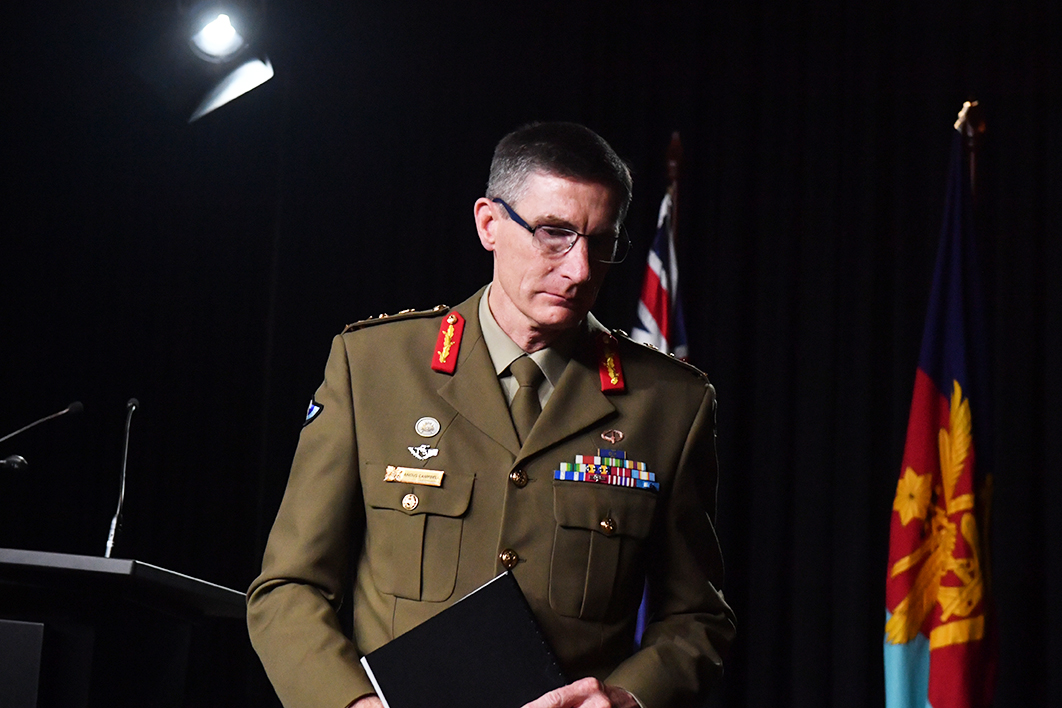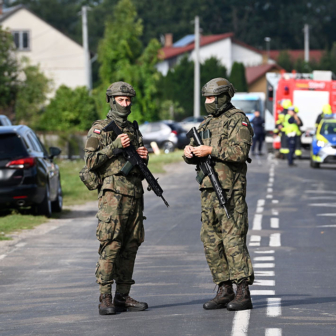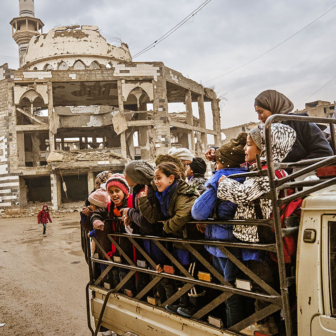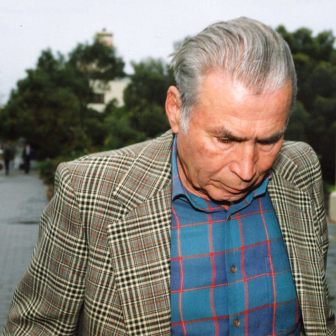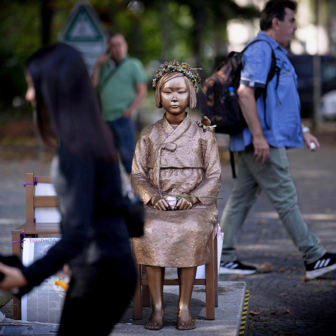The sheer human drama overwhelms the senses. It catches at the throat like the crisp, sharp air of Oruzgan itself, as if you’ve just jumped down from the helicopter onto the stony ground. The adrenaline pumps as you imagine the sudden chaos and excitement, the sheer power and the feeling of omnipotence carried by the crack Special Forces teams as they descended from the air onto the almost medieval rural villages.
We know — or think we know — what happened next because everything that happened during these engagements was carefully recorded at the time, pored through by analysts back in Tarin Khot and Kabul, and then noted down in an extensive series of after-action reports. Military historian Rhys Crawley is ploughing through these at the moment, conscientiously compiling the official history of Australia’s engagement. That’s what we know — the facts repeated and the successes trumpeted by Defence’s public relations department at Russell Hill in Canberra.
The truth, of course, is a different thing altogether.
As a journalist I’ve spent time embedded with the Special Forces Task Group and also “outside the wire.” The narratives that I heard during this period were dramatically different from each other; it all depended on whom you spoke to. The sad reality was that reporters couldn’t risk travelling independently in the Australian area of operations — it was just too dangerous. So there was no verifiable evidence of what was really happening, especially in those remote areas where the Taliban were operating.
We knew the policy was to strike hard at the Taliban, interdicting the supply lines stretching from the wilds of the Pakistan border to Kabul itself. Special Forces were used repeatedly to eliminate enemy commanders and small insurgent forces and dominate the terrain. In this way, the Special Forces evolved from its original role, as a strategic force providing vital intelligence and engaging only in absolutely critical actions, into a “kinetic” unit, used constantly to “take out” people who were supposedly enemy commanders. No longer a strategic reserve, it became the tactical force of choice.
These aggressive patrols, together with body counts never openly discussed, offered the illusion of progress and even the possibility of victory. No one wanted, or felt the necessity, to look too deeply into the brief period after those instants of chaos in which the battle was fought. Nobody worried too deeply about what happened when the area was being secured: after all, these were critical missions. The SAS was cutting off the head of the growing insurgency, killing enemy commanders and leaving peasant farmers alone.
What’s important to realise is that these are the moments that Justice Paul Brereton investigated during his probing of alleged war crimes. Not what happened during the action, when soldiers were making split-second decisions under fire, but what occurred afterwards. This is what is so shocking about his revelations.
These are not instances that can be shrugged off with the casual comment, “Oh well, that’s what happens in war.” Brereton investigated killings — murders — committed after the fighting had finished.
If you wonder, even for a moment, about the care and precision with which he completed his task, then read his report (or at least those parts of it that are not expunged, which include the entire six volumes of part two, almost certainly many hundreds of pages). Then, if you still doubt the possibility that Australian diggers killed potentially innocent Afghan civilians, watch the videos and read the published accounts in the media.
With no preconceived agenda, no axe to grind, and an extensive experience of the military (Brereton trained as an infantry officer in Sydney University Regiment and has served, part-time, for most of his life), the lawyer went about his task carefully and meticulously. He interviewed people, interviewed them again, then travelled to Afghanistan. He immersed himself in gathering evidence and exploring the totality of what passed in the moments following the battle. This is where our focus will be drawn over the next few years: to questions of detail.
Civilian juries will be deciding not just if events occurred the way they are described in the report on the balance of probability, but if they happened this way beyond reasonable doubt. What is on trial is rapidly emerging as much more than the guilt or innocence of individual soldiers. Legal teams and, perhaps more worryingly, public relations and other consultants have already been briefed and are entering the arena to debate the prosecution before any charges have been laid.
These will not simply be trials about the soldiers’ actions. The ramifications will be far more significant. The decision to intervene, coupled with the subsequent decisions of governments of both persuasions, is on trial because it will be impossible to separate them from broader policy issues and questions. When they are delivered, the verdicts will not only deal with what happened in Afghanistan: they will be a judgement on the Anzac myth of the exceptional digger and, because of this, the very value of using military force in places like Afghanistan.
In the meantime, many soldiers will suffer in ways big and small as a result of the actions of the few. On the morning that General Angus Campbell released the report he also announced that the meritorious unit citation — a small federation star on a golden background — will be stripped from members who had served with Special Forces. Because this special badge was awarded to the entire unit, it makes eminent sense to withdraw it. But that’s not the way it appears to many of the soldiers, who will now have a gap where it was once pinned on their uniform.
There’s no point, now, in attempting to tease out what actually happened on the fifty-seven occasions where Brereton finds a war crime was committed. The courts will do that. The 1000-plus pages of the unredacted report focus on twenty-three instances where he believes that twenty-five Australian soldiers (mostly, but not all, members of the Special Forces) made conscious decisions, completely removed from the heat and confusion of battle, to illegally kill thirty-nine Afghan civilians (and severely mistreat two others).
Brereton has outlined a clear path forward, but it’s littered with jeopardy on either side. How can evidence initially given under compulsion be used? Why are some junior soldiers apparently being given indemnities from prosecution in return for evidence that may convict more senior soldiers? Can such evidence really bear the burden of proof — “beyond reasonable doubt” — that such cases require?
Each crime has been individually and carefully detailed, ready for the prosecutions brief to be compiled. It’s this precision that furnishes the inquiry with incredible strength. But it also leaves a vacuum at its centre, because these aren’t the only issues that need to be fixed.
The investigation has exposed a great deal more that needs to be tackled. First, there are the problems within the structure of the army itself, particularly evident in the separate martial culture that has been allowed to develop within the Special Forces. The units have become isolated from the mainstream and have acquired a hallowed, almost untouchable reputation. As its one-time members have been promoted up the chain of command, it’s acquired the gloss that has made even a brief period of service appear a prerequisite for higher positions.
It’s vital to keep in mind that instead of ending the insurgency, the violent tactics adopted by the units appear to have exacerbated the violence and created new enemies. All those raids were, in the end, utter failures. Instead of strategically successful strikes at critical, irreplaceable Taliban assets, it’s now clear that the Special Forces mainly achieved short-term or tactical successes. And when they began killing civilians, they began working actively against the entire mission.
In some parts of the military a clear rectification plan has been outlined and already begun. In others, however, no way forward seems to have been charted. The reluctance to tackle the full dimensions of the problem is understandable, but will do nothing to solve it.
The second issue is the effectiveness of the Special Forces. This is, after all, the entire reason the investigation began. Sociologist Samantha Crompvoets was called in because the (then) Special Forces commander was aware of this problem and needed her technical assistance to take it further. If her report helped prompt the subsequent investigation, it was only because the ground had already been tilled and prepared for exactly that outcome.
The commanders were well aware that something had gone wrong, particularly in the SAS. It wasn’t the unit it had been before successive commitments in the Middle East. In particular, senior non-commissioned officers were effectively running the regiment. It was focusing on “kinetic” action, almost to the exclusion of its other tasks. This situation needed to change, and quickly.
Against that background, another way of looking at the Brereton inquiry is through a management prism. Last Thursday the inquiry provided a reason for removing ten further members of the SAS. It has proved an extremely effective way of bringing the unit back under control by shaking out the bad apples. The SAS today is a very different beast from the one that deployed, time and time again, into Oruzgan.
Finally, these accusations have opened deep fissures, not just in the military but across the country. The Anzac myth, with its image of the larrikin digger, looms large; but now we’ve found it has a very dark shadow. Many Australians will be challenged by this revelation and feel it represents a direct assault on their own identity. It’s amazing how many individuals, including those who have never joined up to serve, hold such definitive views about Anzac. Some people I’ve spoken with, most of whom have no idea what the soldiers have been accused of, have attempted to dismiss the charges as simply applying to “what happens in war.”
Others, of course — people already suspicious of the warrior ethos that holds such a dominant place in our society — have already swung instinctively the other way. For them nothing good was done in Afghanistan and prejudice against the military has merely grown.
What was once an icon, a binding figure that could be used by politicians to hold the country together (as well as a political prop) no longer possesses unquestioned authority. People are looking at the army and, if not actually finding it wanting, certainly keen to examine it.
The biggest questions are strategic. How could it be that this country sent soldiers to patch up Afghanistan only to have a significant number go rogue, turn themselves into gods, and arrogate to themselves the right to decide who would live and who would die? What was the point of all that money, all those lives lost?
No matter the care with which you read the narrative, you won’t find the answer to either of these critical questions in Brereton’s pages. Instead of closing the cover on a dark chapter of our history, it ensures that these issues will continue reverberating for a long time to come.
No matter how the individual war crimes allegations are resolved, Brereton’s report challenges something far more significant — our way of understanding what it means to be Australian. Society works through stories. We knit together narratives and use these to tell ourselves about who we are, to justify our behaviour and to explain why we’re acting the way we do. That’s why stories are critical. They are the frames of reference inside which we make meaning for our lives.
The Anzac myth has become one of the country’s most powerful ideologies. It’s been used, quite deliberately, to shape modern Australia. Both sides of politics have borrowed these stories to help elevate the shallow mechanics of government into something transcendental. In the nineties, prime minister Paul Keating bent down on the Kokoda Track to kiss the ground defended by young men during the second world war; in 2015, the narrative switched to Gallipoli when prime minister Tony Abbott insisted that the diggers had played a critical role in “the founding of modern Australia.”
The revered Anzac has become much, much more than an unquestionable truth. The image of the selfless digger has come to play a special role in the way we perceive our society and its actions. Brereton’s investigation means the country will need to find a new way of understanding itself without looking for a martial glue to hold things together. Politicians will need to find a new way of justifying their actions without wrapping themselves in the flag and slouch hat.
One of the great foundational myths of the country has suddenly come unstuck. Perhaps there really is nothing so unique about the Anzacs after all. And how can we trust all those other things we’ve been told? •
